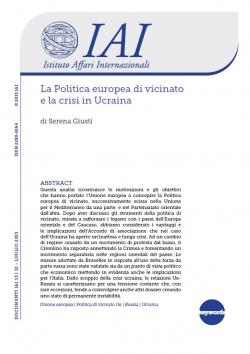La Politica europea di vicinato e la crisi in Ucraina
This analysis reconstructs the motives and objectives that led the European Union to introduce the European Neighbourhood Policy, which was later split into the Union for the Mediterranean on the one hand, and the Eastern Partnership on the other. After discussing the instruments of the Neighbourhood Policy, aimed at strengthening ties with the countries of Eastern Europe and the Caucasus, we consider the advantages and implications of the Association Agreement which, in the case of Ukraine, triggered a long and unexpected crisis. The Kremlin responded to the regime change brought about by a grass-roots protest movement by annexing Crimea and fomenting a separatist movement in the eastern regions of the country. The measures taken by Brussels in response to the use of force by Russia are assessed from both a political and an economic point of view, highlighting also the implications for Italy. Since the outbreak of the crisis in Ukraine, EU-Russia relations have been characterised by constant tension which, with rare exceptions, has tended to spill over into other dossiers, creating a state of permanent instability.
Paper prepared for the Istituto Affari Internazionali (IAI) in the framework of the “Citizens’ Dialogues” initiative promoted by the Representation of the European Commission in Italy. An earlier version has been presented at the seminar “La politica europea di vicinato in crisi? Il caso Ucraina e il futuro delle relazioni con la Russia”, held in Trento on 17 June 2015. The seminar has been organised by the EC Representation in Italy, the Jean Monnet Centre (CJM) of the University of Trento, the Istituto Affari Internazionali (IAI) in Rome, the International Research Project on Politics and Conflict Resolution (CERPIC) of the Bruno Kessler Foundation in Trento and the Observatory on Balkans and Caucasus (OBC) of Rovereto.
-
Details
Roma, IAI, July 2015, 13 p. -
In:
-
Issue
15|15
1. Dalla Politica europea di vicinato al Partenariato orientale
2. La crisi ucraina
3. La scelta europea dell’Ucraina
Riflessioni finali



